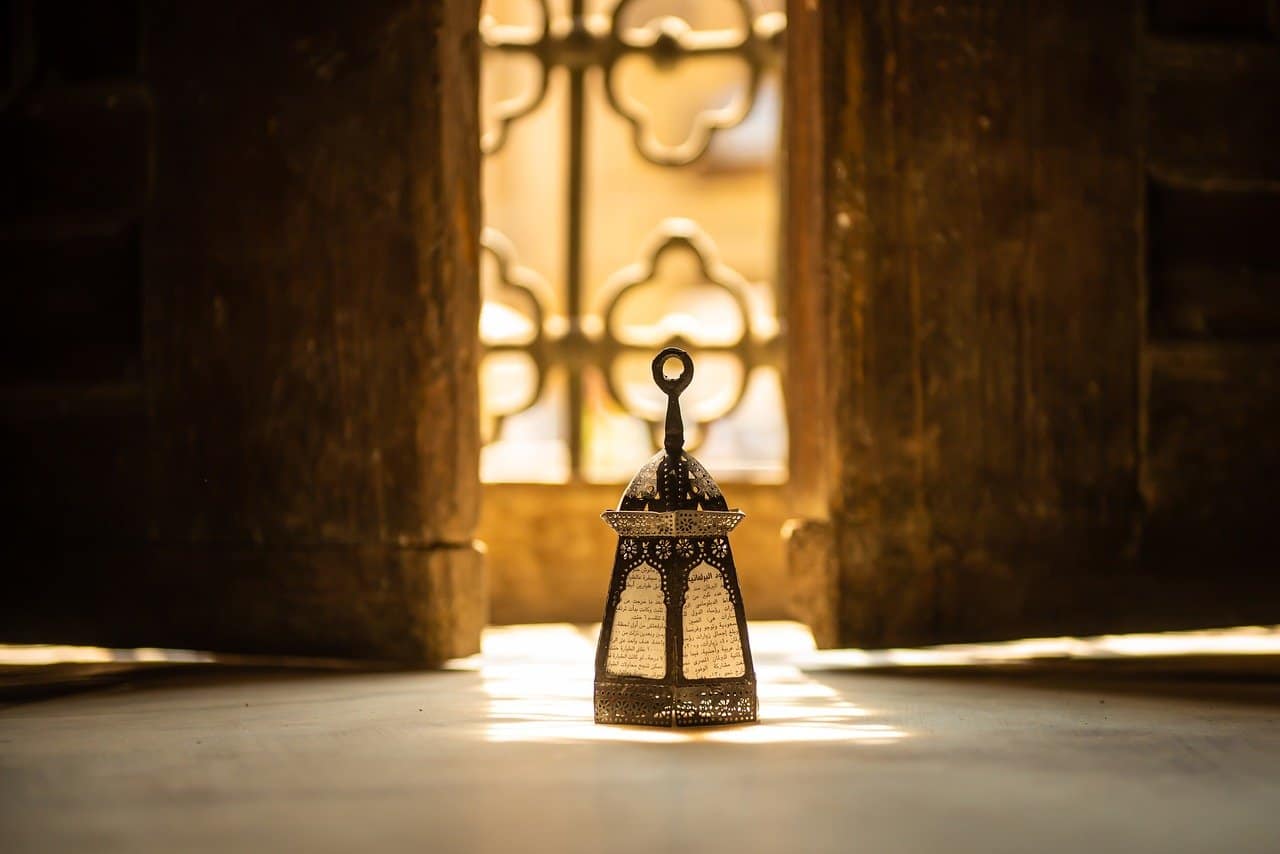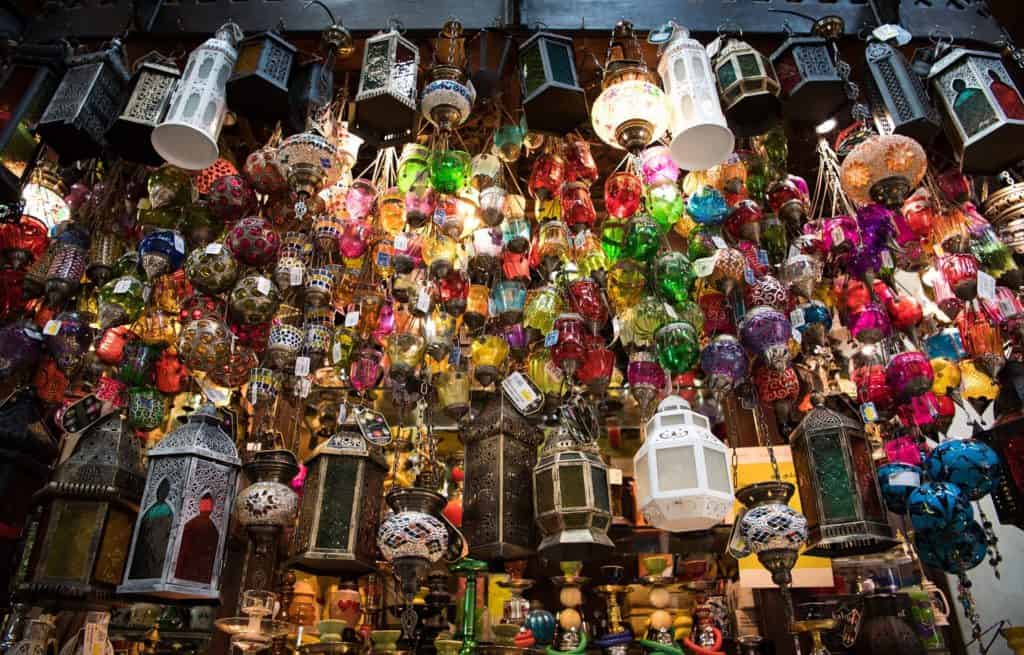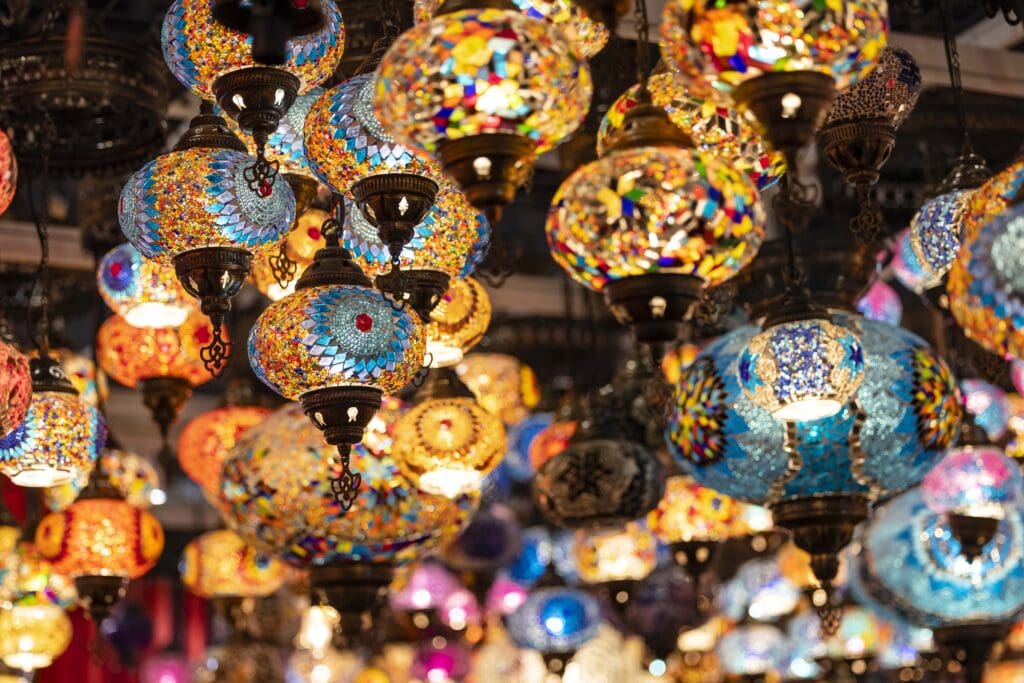Ramadan Month in Cairo, Egypt

Updated On: April 07, 2024 by Marwa Alaa
Ramadan is a holy month for all Muslims around the world. But it feels different in every country. We can assure you that Ramadan in Cairo, Egypt, hits entirely differently. Ramadan is the ninth month of the Islamic lunar calendar, and it is a particular month for Muslims because the first verses of the Quran were revealed to the Prophet Muhammad during it.
Ramadan in Cairo feels like a festival that lasts for 30 days straight. The lanterns and decorations on the street make it feel like a festival. Muslims refrain from drinking and eating from sunrise to sunset. After their Iftar (the fast-breaking meal), the streets become lively and buzzing. Before and during Iftar, you would see numerous tables making a line and being bombarded with food for the poor.
It is a month for the mind, body, and soul to get purified. Ramadan is also a month to give back to society and self-reflect. It is truly a blessed month.
The Essence of Ramadan
Ramadan commemorates the revelation of the Quran to Prophet Muhammad, and Muslims observe it by fasting from dawn until sunset. Fasting is not just abstaining from food and drink; it encompasses self-restraint from negative thoughts and actions, fostering empathy towards the less fortunate, and strengthening one’s relationship with God.
In Cairo, the essence of Ramadan is palpable in every corner. The city takes on a unique rhythm, with streets bustling before dawn as people gather for Suhoor, the pre-dawn meal, to sustain themselves throughout the day. Families wake before sunrise to partake in this communal meal, often consisting of hearty dishes like foul medames (fava beans), falafel, and traditional pastries like katayef.
As the day progresses, the city slows down, with many businesses operating on reduced hours to accommodate the fasting population. Streets typically teeming with activity become quieter as people retreat indoors to conserve energy and focus on prayer and reflection.
Ramadan traditions

One of the Egyptian traditions is to hang colourful lanterns specifically made to celebrate the month of Ramadan. Lanterns are also a joint gift to give to children during Ramadan. Houses and streets get covered with Ramadan-themed drapes and table covers.
The Ramadan drummer/night caller. Waking up before sunrise for a meal (Suhoor) is challenging for many Muslims during Ramadan. This is where the Ramadan drummer comes in. The Ramadan drummer is a long-lasting tradition from the Ottoman Empire that is still practised today in Egypt and other countries like Turkey.
Every neighbourhood has a drummer. They wander the streets with a drum to wake people up for the Suhoor meal before dawn. They rhythmically recite verses of poetry to encourage people to eat the Suhoor meal and prepare for fasting. You can request that they be called while singing the poetic verses. Children especially look forward to this. At the end of the month, the neighbourhood tips the drummer to thank him for all of his hard work during the 30 days of Ramadan. It is a beautiful tradition passed down from generation to generation.
Another tradition is firing the Iftar cannon. Every day in Ramadan, before sunset, Egyptians hear the firing of the Iftar cannon that tells them to break their fast. Although the firing is not heard today, many Egyptians wait before the T.V. to listen to its recorded version.
Ramadan food
Many distinct dishes are made that hold the spirit of Ramadan. Muslims typically break their fast with dates and water. They usually follow this with a small bowl of soup of any kind.
Since Ramadan is a chance for family gatherings, it is also a chance for certain dishes to be the highlight of the food table. During family gatherings, stuffed vegetables (Mahshi) are the dominant dish, along with chicken, stuffed pigeons, and different kinds of salads as a side dish. The menu changes daily, but most families have these for Iftar on the first day.
The central star of the Suhoor meal is fava beans. It can be topped with onions and tomatoes. Every household can get creative with their fava bean dish. Egyptians have boiled or scrambled eggs alongside it. They also eat a lot of cucumbers to help them face their thirst in the daytime.
Desserts are on another level in Egypt. Somehow, this month is associated with oriental desserts that debut at the start of the month. It is expected to see shops swirl a batter and make Kunafa, which is shredded phyllo dough soaked with sweet syrup and topped or stuffed with nuts and cream. There are also Qatayef shops where you can see the Qatayef being made and cooked. Qatayef is a kind of mini pancake that is stuffed with cream and nuts.
Spiritual Reflection and Community Bonding

Ramadan is not only a time for individual spiritual growth but also for strengthening community bonds. In Cairo, mosques overflow with worshippers attending Taraweeh prayers, special nightly prayers held during Ramadan. These gatherings foster a sense of unity and solidarity among Muslims as they come together to worship and seek forgiveness.
Beyond the mosque, Cairo’s neighbourhoods come alive with the spirit of Ramadan. Families gather for Iftar, the meal that breaks the day’s fast at sunset, sharing traditional dishes and sweets. Breaking fast with loved ones fosters a sense of kinship and camaraderie, reinforcing familial ties and social connections.
Ramadan drinks
After a long day of fasting, Muslims need something to replenish them. This is where Ramadan drinks come in handy. They are thirst-quenching and filled with a bunch of vitamins. These drinks include sweetened hibiscus, liquorice juice, dried apricot juice, and tamarind juice. Fruit juice like mango and lemon juice can also be found on the dinner table.
Culinary Delights of Ramadan
No discussion of Ramadan in Cairo would be complete without mentioning the culinary delights that grace the Iftar table. Egyptian cuisine shines this month, with an abundance of traditional dishes and sweets catering to every palate.
Staples like “koshari,” a hearty vegetarian dish made with rice, lentils, pasta, and a tangy tomato sauce, are ubiquitous during Ramadan. Other favourites include “fattah,” rice, bread, and meat topped with garlic-infused tomato sauce and crispy onions, and “molokhia,” a green soup made from the leaves of the molokhia plant.
For those with a sweet tooth, Ramadan offers an array of delectable desserts, including “qatayef,” stuffed pancakes filled with nuts or sweet cheese and drizzled with syrup, and “basbousa,” a semolina cake soaked in syrup and topped with almonds or coconut flakes.
Challenges and Reflections
While Ramadan in Cairo is a time of joy and celebration, it also presents challenges, particularly for those fasting in the summer heat. Cairo’s scorching temperatures can make fasting a daunting prospect, leading to dehydration and fatigue for some. However, the spirit of resilience prevails, with Muslims drawing on their faith and community support to overcome these obstacles.
Moreover, Ramadan serves as a period of introspection, prompting individuals to reflect on their actions, seek forgiveness, and strive for personal growth. It is a time to cultivate patience, gratitude, and empathy, which extend beyond the month and enrich the fabric of Cairo’s society.
Charitable Giving and Social Responsibility
Ramadan is also a time for charitable giving and social responsibility, and Cairo’s residents embrace this aspect of the month wholeheartedly. “Zakat al-Fitr,” or the obligatory charity given at the end of Ramadan, ensures that the less fortunate can partake in the festivities of Eid al-Fitr, the celebration marking the end of Ramadan.
Throughout the month, mosques and charitable organisations organise food drives and distribute meals to those in need, ensuring that everyone can enjoy a nutritious Iftar meal. Additionally, individuals and businesses often set up “tables of charity” known as “ma’idat al-rahman,” where free meals are provided to anyone who wishes to partake.
What to do after Iftar?
After Iftar, some people go to malls, and some go to parks. But we recommend you take a trip to Old Cairo. There are many places to visit, including Khan El Khalili and El Moez Street. This famous café called El Fishawy has been open for over 200 years. You can also go to the Nile area and enjoy a drink in the cafes surrounding the Nile. There is so much to do in Cairo at night and until the Suhoor time, so make sure you experience it all!
Conclusion
Ramadan in Cairo is a month-long celebration encapsulating the essence of Islamic spirituality, cultural heritage, and communal solidarity. From the pre-dawn rituals of Suhoor to the joyous gatherings of Iftar, the city comes alive with a palpable sense of devotion and festivity. Through traditions, old and new, Cairo’s residents embrace the spirit of Ramadan, embodying the values of compassion, generosity, and togetherness that define this sacred month. As lanterns illuminate the night sky and the aroma of traditional dishes fills the air, Ramadan in Cairo is a testament to the enduring power of faith, family, and community.






